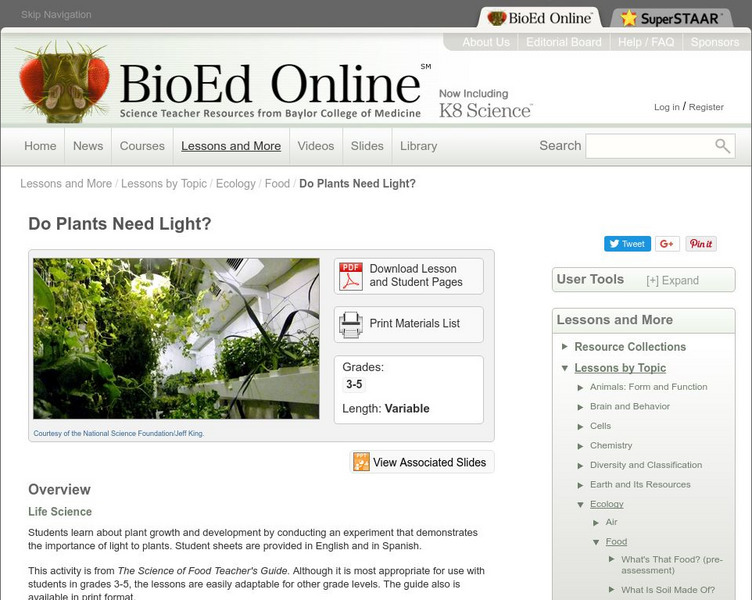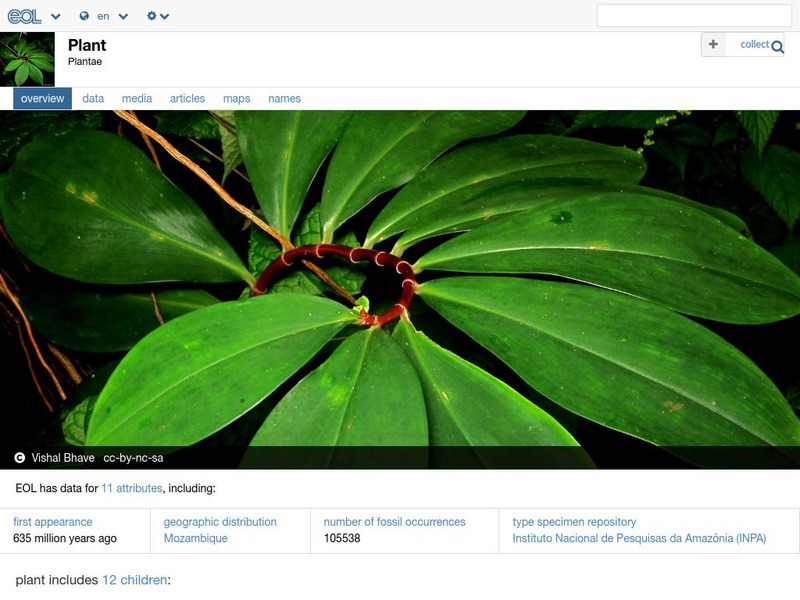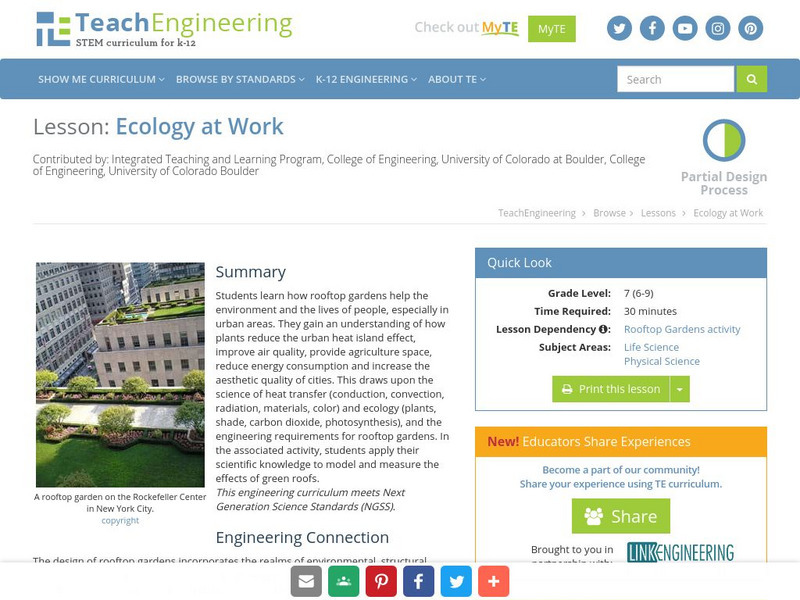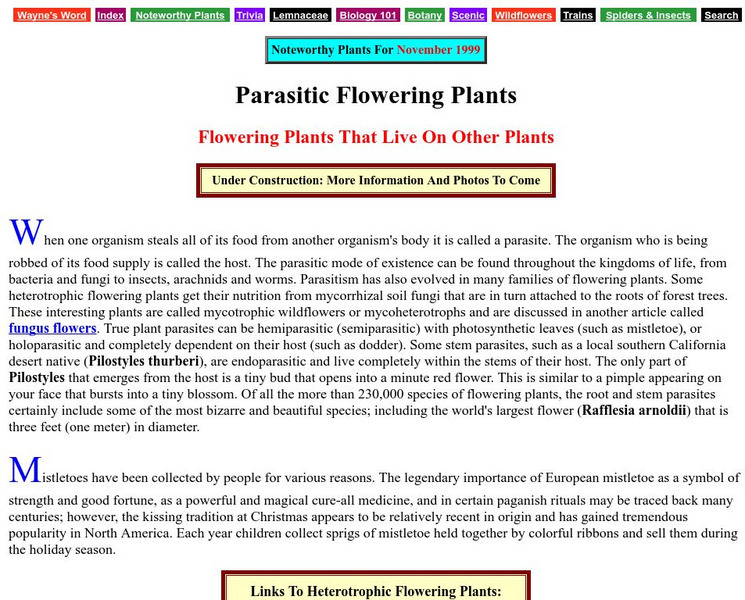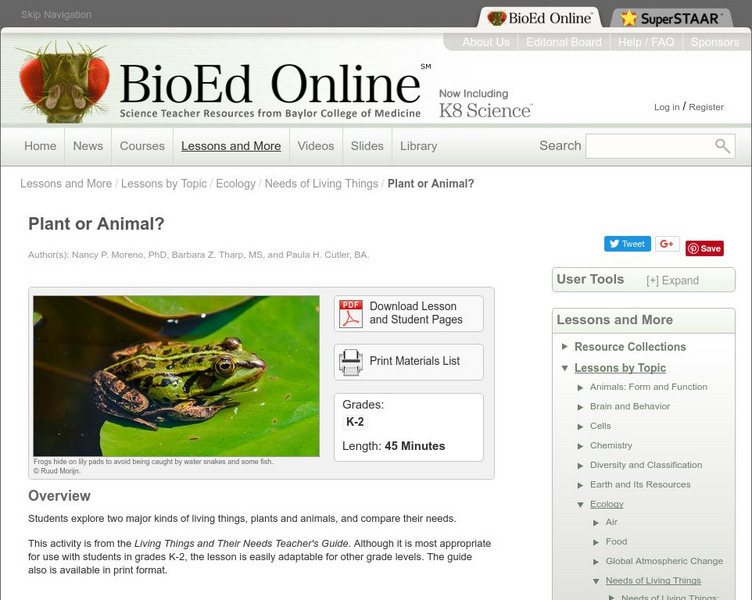Polk Brothers Foundation Center for Urban Education at DePaul University
De Paul University: Center for Urban Education: I Like Plants [Pdf]
"I Like Plants" is a one page, realistic fiction, reading passage about a person who loves plants and became a botanist; now she teaches her college students about plants and ecology. It is followed by constructed-response questions...
Polk Brothers Foundation Center for Urban Education at DePaul University
De Paul University: Center for Urban Education: I Like Plants [Pdf]
"I Like Plants" is a one page, realistic fiction, reading passage about a person who loves plants and became a botanist; now she teaches her college students about plants and ecology. It is followed by constructed-response questions...
Polk Brothers Foundation Center for Urban Education at DePaul University
De Paul University: Center for Urban Education: I Like Plants [Pdf]
"I Like Plants" is a one page, realistic fiction, reading passage about a person who loves plants and became a botanist; now she teaches her college learners about plants and ecology. It is followed by constructed-response questions...
BioEd Online
Bio Ed Online: Do Plants Need Light?
Plants need air, water, soil, and light to grow. Students learn about plant growth and development by conducting an experiment that demonstrates the importance of light to plants.
Other
Study of Northern Virgina Ecology: Black Carpenter Ant
Lots of information about the black carpenter ant. Learn about their physical characteristics, colonies, life cycle, food sources, and predators. A detailed chart listing many plants and animals permits exploration of their relationships...
Encyclopedia of Life
Encyclopedia of Life: Plants
Thorough resource examines plants with a description, pictures, and maps. Includes facts on ecology, evolution, functional adaptations, and external links.
Other
Ohio Dept. Of Education: Plants and Animals Around the Year
This is a unit for Grade Two where students investigate the plants and animals found in their schoolyard and prepare a poster display.
US Environmental Protection Agency
Epa: Climate Change: Plants, Animals, and Ecosystems
Find out how plants and animals adapt to changes in ecosystems.
Other
Suny Stony Brook: Spartina Salt Marsh Ecology
Good illustrated introduction to Spartina salt marsh ecology. Focus on the grasses and their interactions with each other and the animals that inhabit the marsh.
TeachEngineering
Teach Engineering: Ecology at Work
Students learn how rooftop gardens help the environment and the lives of people, especially in urban areas. They gain an understanding of how plants reduce the urban heat island effect, improve air quality, provide agriculture space,...
PBS
Nova: How Plants Use Fire
Fire is generally regarded as a negative phenomenon. Find out how plants and animals are adapted to survive fires and can even benefit from it.
FT Exploring
Ft Exploring: The Flow of Energy Through Plants and Animals
Explore the different ecological roles of organisms in the ecosystem, and find out how the energy flows through them.
Polk Brothers Foundation Center for Urban Education at DePaul University
De Paul University: Center for Urban Education: Prairie Ecology Questions and Activities [Pdf]
"Prairie Ecology Questions and Activities" is a one page, nonfiction, reading passage about prairie ecology the interdependence of its plants and animals. It is followed by questions which require students to provide evidence from the...
National Center for Ecological Analysis and Synthesis, University of California Santa Barbara
Kids Do Ecology: Temperate Grasslands
At the National Center for Ecological Analysis and Synthesis, you can learn where temperate grasslands are located! Other information includes grassland weather, plants, animals, people, and more.
National Center for Ecological Analysis and Synthesis, University of California Santa Barbara
Kids Do Ecology: Savanna
Learn where savannas are located! Other information at the site from the National Center for Ecological Analysis and Synthesis includes grassland weather, plants, animals, people, and more.
National Center for Ecological Analysis and Synthesis, University of California Santa Barbara
Kids Do Ecology: Biomes
At this site from National Center for Ecological Analysis and Synthesis you will find the answers to many questions about biomes. You will also find a listing of biomes along with a detailed explanation of each.
Palomar Community College District
Palomar College: Parasitic Flowering Plants
The ecology and natural history of plants that live at the expense of other organisms is described in detail at this site from the Palomar College. Great material for a report or presentation.
CK-12 Foundation
Ck 12: Life Science: 7.10 Seed Plants
Learn the characteristics and ecology of seed plants.
National Center for Ecological Analysis and Synthesis, University of California Santa Barbara
Nceas: Kids Do Ecology: Freshwater Wetlands
Find out about the plants, animals, people, and location of freshwater wetland ecosystems.
Michigan State University
Michigan State University: Digital Learning Center for Microbial Ecology: Microbe Zoo: Ag Acres
A simple overview of the important roles microbes play in agriculture. You'll learn how some microbes can be hazardous to plants while others help fertilize and build soil, and kill insects.
Encyclopedia of Earth
Encyclopedia of Earth: Botany: Mangrove Ecology
Extensive article on mangroves. Covers classification, physical characteristics, life cycle, habitat, economic value, and natural and human threats to their survival.
Curated OER
National Park Service: Alien Plant Invaders of Natural Areas
A virtual who's who of invasive plants, herbs, vines, shrubs, and trees. This comprehensive site provides easy-to-read fact sheets that contain native ranges, plant descriptions, ecological threats, U.S. distributions & habitats,...
BioEd Online
Bio Ed Online: Living Things and Their Needs: Plant or Animal?
In this instructional activity, students investigate and compare the needs of plants and animals. The instructional activity can be downloaded in PDF format.
BioEd Online
Bio Ed Online: Plant Parts You Eat
Did you know that some plant parts are edible? People rely on many different plants and plant parts for food. In this lesson plan students observe and investigate different plant-originated foods, and learn about plant parts.
![De Paul University: Center for Urban Education: I Like Plants [Pdf] Unit Plan De Paul University: Center for Urban Education: I Like Plants [Pdf] Unit Plan](https://d15y2dacu3jp90.cloudfront.net/images/attachment_defaults/resource/large/FPO-knovation.png)
